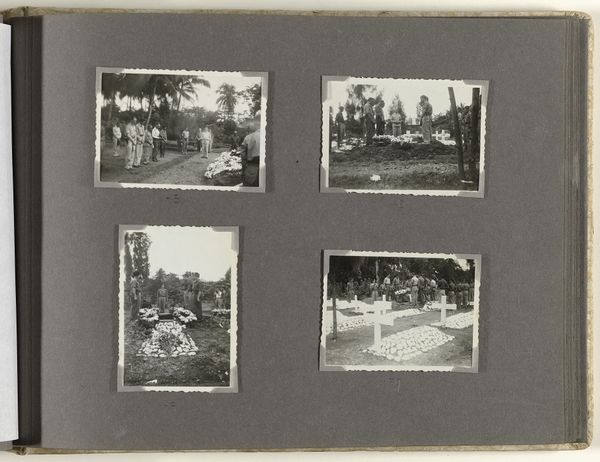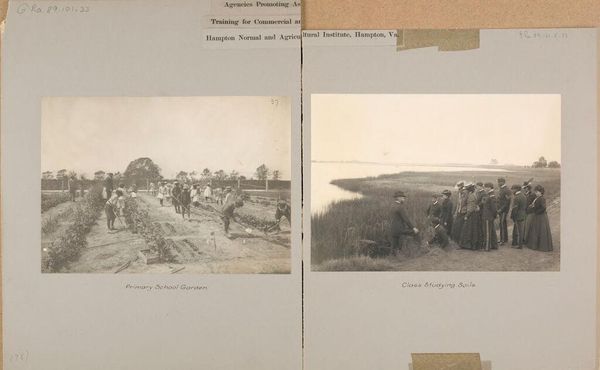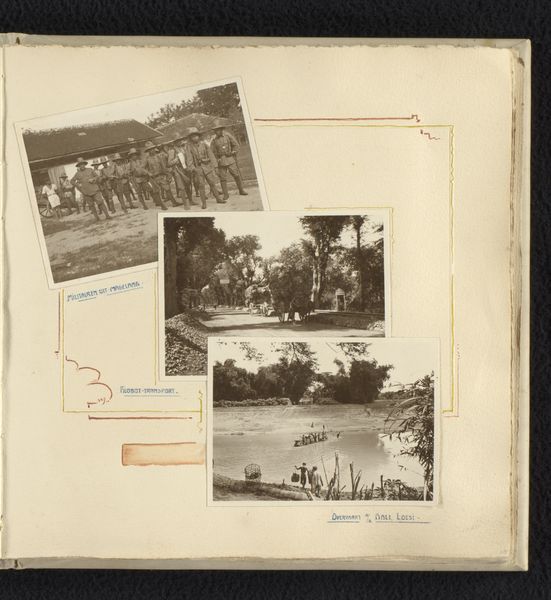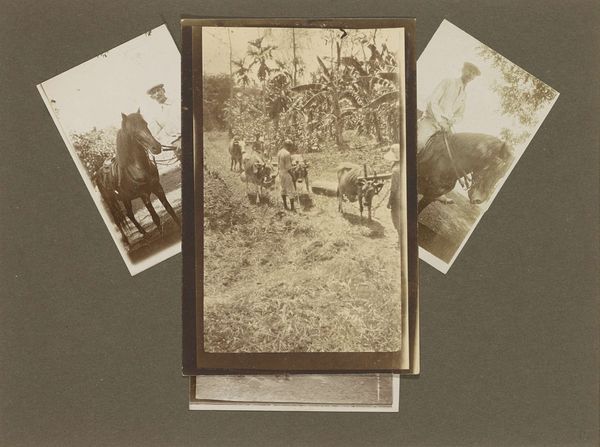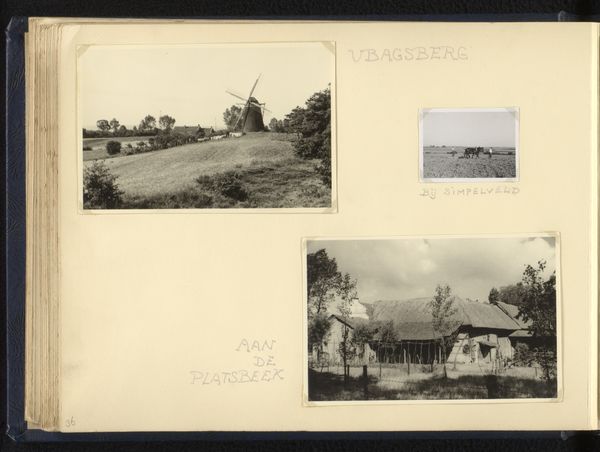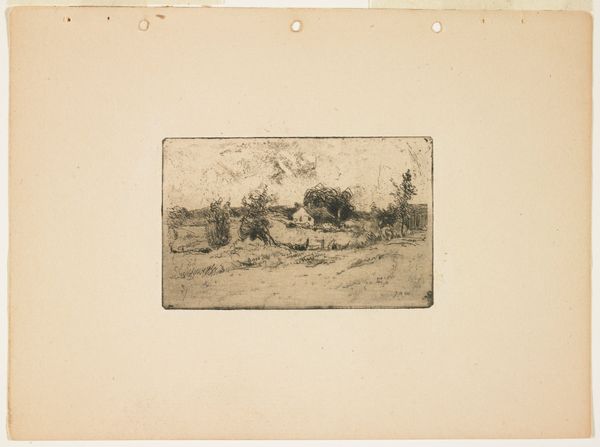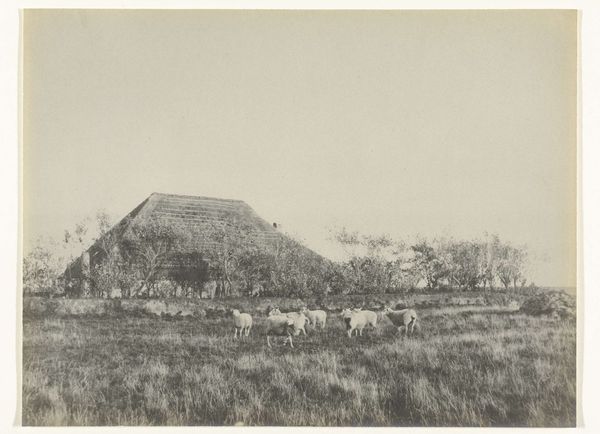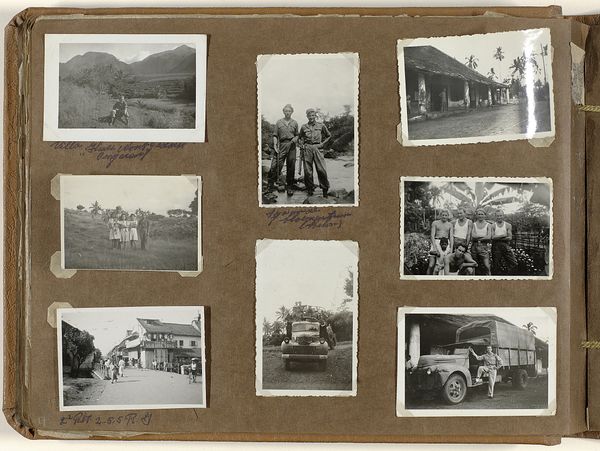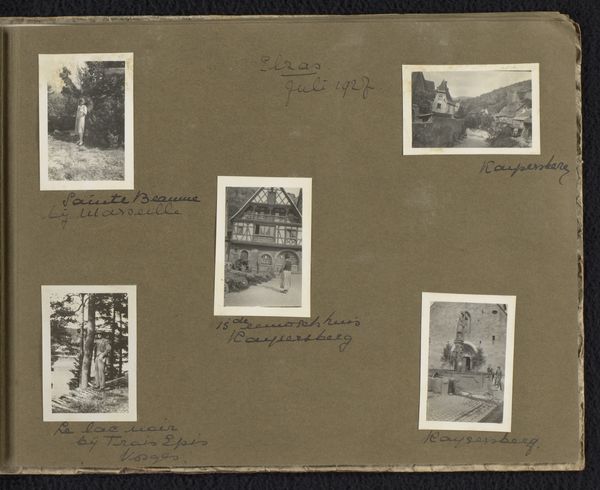
Gezicht op het dorp Dokan (linksboven), dragers van een expeditie (linksonder), moeder met kinderen en het dorp Kaban Djahé (rechtsboven en rechtsonder) op Sumatra before 1898
0:00
0:00
gelatin-silver-print, photography, gelatin-silver-print
#
gelatin-silver-print
#
asian-art
#
landscape
#
photography
#
gelatin-silver-print
Dimensions: height 96 mm, width 128 mm, height 94 mm, width 127 mm, height 117 mm, width 128 mm, height 86 mm, width 130 mm
Copyright: Rijks Museum: Open Domain
Curator: Before us, we have "Gezicht op het dorp Dokan…," a rather unwieldy title, by Carl J. Kleingrothe. This gelatin silver print, dating from before 1898, captures scenes in Sumatra. Four vignettes, to be exact. What strikes you first? Editor: There’s a ghostliness to it all. Something about the soft gray tones, the way the light catches… it feels like peering into a dream, or maybe a fading memory. Curator: Dreams developed in silver nitrate, perhaps! It's fascinating how Kleingrothe arranged these views – a village, expedition porters, and a mother with children, all within one frame. It almost feels like a comparative study. Look at how those rooflines echo each other. Editor: Yes! It feels intentional, a weaving together. But it also strikes me how the act of photographing itself transforms these scenes. The porters, the mother and children… they become ethnographic specimens in a way, documented labor and domesticity. Do you feel that tension between observation and… extraction? Curator: Absolutely. There’s always an implied power dynamic at play when an outsider photographs a community. However, I also see a desire, perhaps naive, to document a way of life. Look at the detail in the woven textiles, the architecture… it’s an attempt at preservation, even if filtered through a colonial lens. Editor: The materiality of the print itself contributes to that feeling. Gelatin silver… it was a relatively new medium then, mass-produced, readily available. It speaks to a shift in how we document and consume images. These villages are far away, but made accessible through industrialized photography. Curator: You're right, it shrinks the world. It invites a kind of detached consumption. Yet, when I focus on the mother’s gaze, I feel a connection. It pierces the historical distance. Perhaps the dream I felt was also one that others may be able to relate. Editor: And in turn this gives insight to others who may relate to it or that were to inhabit it now or in the future. Kleingrothe’s layered composition pushes the way we relate to memory and place. I'll definitely have to come back and consider this piece more. Curator: I feel it too. It leaves us with more questions than answers, and that's what makes it compelling, perhaps.
Comments
No comments
Be the first to comment and join the conversation on the ultimate creative platform.

